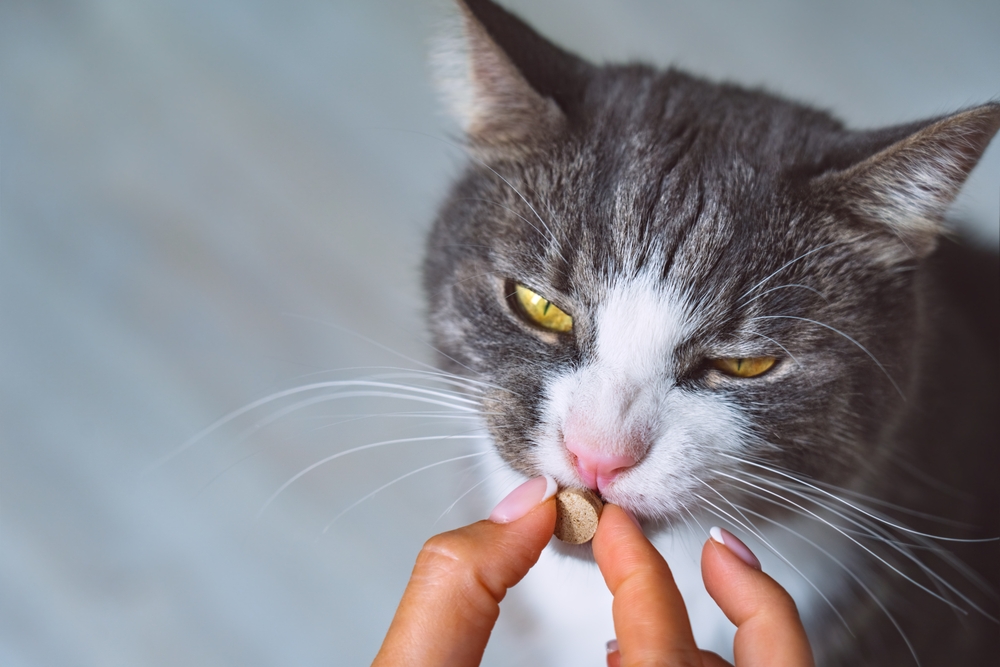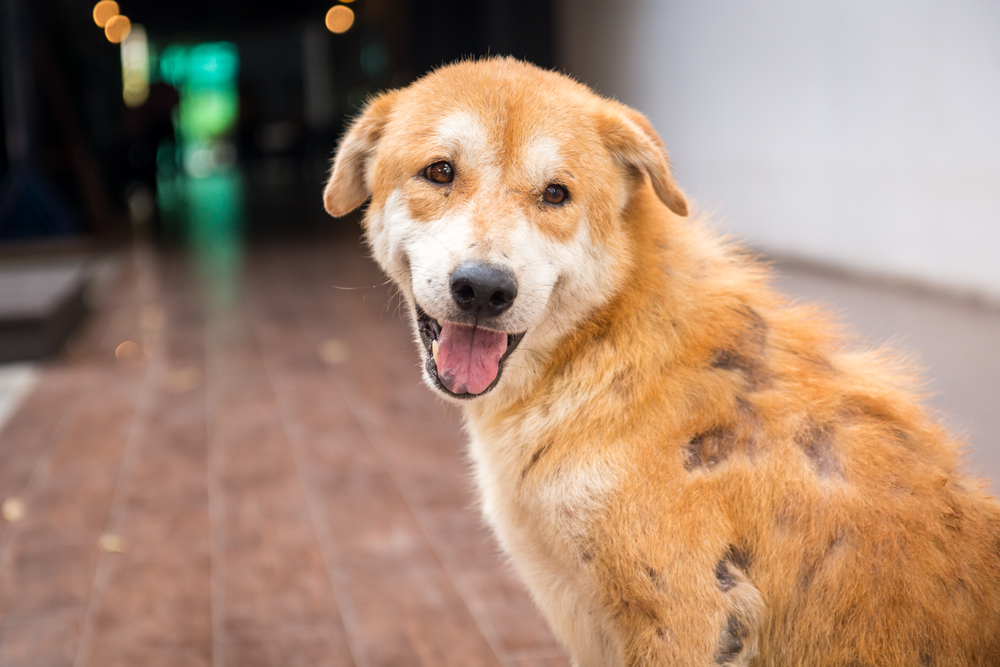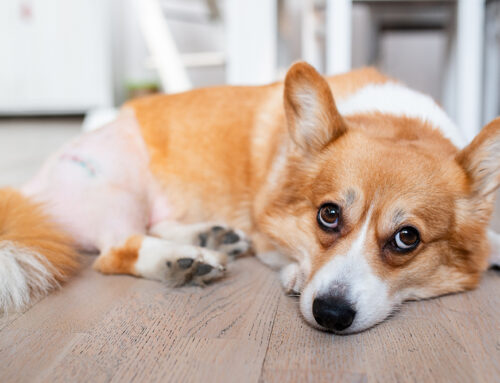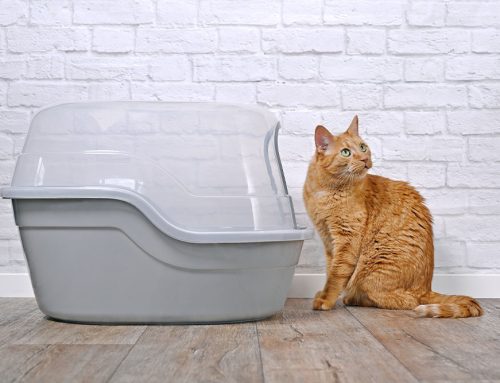Thyroid disease is a common problem for cats and dogs, but they are affected by different types of issues. The thyroid gland, which has two lobes located on either side of your pet’s trachea, functions to regulate your pet’s metabolic rate by producing thyroid hormones. If the thyroid is overactive, a condition called hyperthyroidism occurs, and if the thyroid is underactive, a condition called hypothyroidism occurs. Cats typically are afflicted by hyperthyroidism, while dogs usually develop hypothyroidism. Our team at LaGrange Veterinary Hospital wants to provide information about these diseases, so you can recognize the signs if your pet is affected.
What type of thyroid disease affects dogs?
Dogs typically have an underactive thyroid gland, resulting in hypothyroidism. Disease processes that can cause the condition in dogs include:
- Lymphocytic thyroiditis — This is the most common cause of hypothyroidism in dogs. The condition is thought to be immune-mediated, which means that the immune system recognizes the thyroid as abnormal or foreign, and attacks the gland. Lymphocytic thyroiditis is a heritable trait, meaning genetics play a role.
- Idiopathic thyroid gland atrophy — The process behind this condition, where normal thyroid tissue is replaced with fat tissue, is poorly understood.
- Other — While 95% of hypothyroidism cases are caused by lymphocytic thyroiditis or idiopathic thyroid gland atrophy, the other 5% are caused by conditions such as cancer and congenital abnormalities.
What are hypothyroidism signs in dogs?
Hypothyroidism causes your dog’s metabolic rate to slow down, affecting their entire body. Signs include:
- Weight gain without an increase in appetite
- Lethargy and disinterest in activity
- Sensitivity to cold
- Dry, dull hair coat that sheds excessively
- Hair loss, resulting in a thin hair coat
- Increased dark pigmentation in the skin
- Increased occurrence of skin and ear infections
- Facial skin thickening
- Reproduction issues in intact dogs
- Development of keratoconjunctivitis sicca (i.e., dry eye)
How is hypothyroidism diagnosed in dogs?
Specific blood tests are used to diagnose hypothyroidism in dogs.
- Total thyroxine (TT4) — This test measures the most prevalent thyroid hormone. If your dog has a low TT4, as well as clinical signs, this suggests hypothyroidism.
- Free T4 by equilibrium dialysis (ED) — To definitively diagnose hypothyroidism, the levels of multiple thyroxine forms must be assessed. If your dog has a low TT4 and low Free T4 by ED, they have hypothyroidism.
How is hypothyroidism treated in dogs?
Hypothyroidism in dogs is treatable but not curable, and affected dogs must stay on a thyroid replacement supplement for the rest of their lives. Your dog will start with a standard dose based on their weight, and after about one month, their thyroid hormone levels will be retested, to ensure they are staying normal. Your dog’s drug tolerance may change over time, and their thyroid hormone levels should be tested about every six months, to ensure they are receiving the correct dose. If they receive a medication overdose, they will experience hyperthyroidism signs, such as hyperactivity, weight loss, and increased water intake.
What type of thyroid disease affects cats?
Cats typically have an overactive thyroid gland, resulting in hyperthyroidism. Usually, a non-cancerous tumor, called an adenoma, causes the thyroid gland to enlarge and produce more thyroid hormones. In rare cases, a malignant tumor, called an adenocarcinoma, causes the enlargement. Why the tumors develop is unknown, but possible contributing factors include deficiencies or excesses of certain dietary substances, and chronic exposure to certain chemicals in their food or environment. Middle-aged and older cats are most commonly affected.
What are hyperthyroidism signs in cats?
Affected cats exhibit signs including weight loss, restlessness, increased water intake and urination, and an unkempt hair coat. In some cases cats may experience vomiting or diarrhea. Hyperthyroid cats can suffer serious complications, including:
- Hypertension — An elevated heart rate and increased pumping pressure causes high blood pressure. The blood pressure can become so elevated that the affected cat experiences retinal bleeding or retinal detachment, resulting in sudden blindness.
- Thyrotoxic cardiomyopathy — The heart walls can thicken to meet the increased metabolic demands, resulting in an inability to efficiently pump blood through the body.
How is hyperthyroidism diagnosed in cats?
Diagnosing hyperthyroidism in cats typically relies on testing their total thyroxine levels. If this level is elevated, they are hyperthyroid. In rare cases, a free T4 by ED is needed to confirm the diagnosis. Since hyperthyroidism can cause cats significant cardiac issues, other diagnostics, such as chest X-rays, electrocardiogram, and blood pressure measurement, will also likely be performed.
How is hyperthyroidism treated in cats?

Several treatment options are available to address hyperthyroidism in cats.
- Surgery — In most cats, only one lobe of the thyroid gland is affected, and the enlarged lobe can be surgically removed. This approach is typically effective, but recurrence can occur if new abnormal cells develop.
- Oral medication — A medication that blocks excess thyroid hormone production is available. The medication takes several weeks to take effect, and the cat must receive the medication for the rest of their life. Some cats may develop side effects to the medication, including vomiting, lethargy, decreased appetite, anemia, and liver damage.
- Radioactive iodine — Injecting radioactive iodine (I-131) destroys the abnormal thyroid tissue without affecting other organs. Cats usually need to be hospitalized for one to two weeks for radiation therapy.
- Prescription nutrition — Feeding an iodine-limited diet can resolve clinical signs in some cats.
Thyroid disease is a concerning issue for pets, but when diagnosed early, the condition can be managed to alleviate signs and improve your pet’s quality of life. If you are concerned your pet may be affected by thyroid disease, contact our team at LaGrange Veterinary Hospital, so we can get their metabolic rate under control.








Leave A Comment